Rhythm Thief and the Emperor's Treasure (Nintendo 3DS) Review
By Adam Riley  04.04.2012
04.04.2012
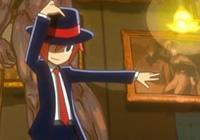
Many gamers, especially avid SEGA fans, will be fully aware of the company’s track record with addictive music-based releases, with the likes of Space Channel 5 and Samba de Amigo being of special note. Now there is a new kid on the block in the form of Rhythm Thief and the Emperor’s Treasure. Read on to find out why this Nintendo 3DS exclusive is a must-have purchase for all the family.
The first key point to note is that Rhythm Thief and the Emperor’s Treasure is far more than a run-of-the-mill ‘follow the beat’ game, with the development team perfectly orchestrating a title that is filled to bursting point with variety that will definitely strike a chord with gamers everywhere (okay, no more sound-related puns, I promise…). Basically, Rhythm Thief elevates itself above the majority of similar titles in the genre thanks to added features aimed at broadening the appeal of what is normally a niche style.
It all starts with some gorgeous, fully-voiced animated sequences, depicting a tale of Raphael, an 18-year-old chap who is somewhat of a Clark Kent in that he has a double-life, masquerading as ‘Rhythm Thief R’ whenever he wishes to ‘acquire’ some art that catches his eye. Ultimately, though, his aim is to seek out his father, who went missing several years ago under mysterious circumstances. Keeping him company is his ever-faithful and ever-hungry mutt, Fondue, who even helps out in some of the tasks faced during this musical adventure.
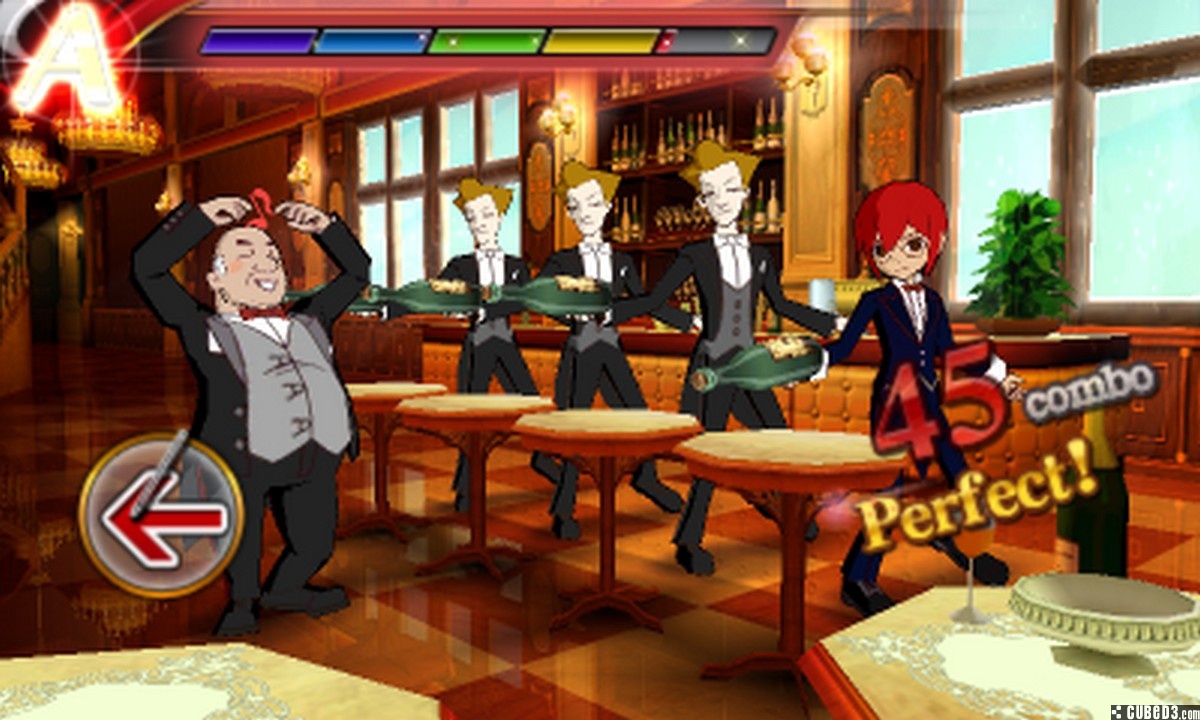
The Parisian setting is awash with highly characterised French-tinged background music, but of a more upbeat nature than the slow-paced accordion-based themes so loved in Level-5’s Professor Layton series. Whilst Layton and Luke are puzzler solvers, the infamous art-thief-with-a-twist (he returns pieces after a few days), Raphael, chooses to solve the mystery he becomes embroiled in by outwitting his adversaries with nimble feet and a keen sense of using any beat to his advantage. Along the way, the young lad crosses paths with a musician named Maria who possesses violin, but not just any old string instrument -- one that sports an unusual seal that reacts when in close proximity to a coin Raphael’s father left for him. Oh, and then there is the whole issue of a supposedly resurrected Napoleon and his army of armoured slaves to contend with…
As can be seen from these points alone, this is in no way a mere case of going through the motions until the end credits roll. The yarn weaves around a heart of downright pure gold. Throughout each chapter, players take control of Raphael on the top screen, moving him around the city from place to place, with a yellow dotted path indicating where he can wander to and a red one highlighting where to follow in order to continue the story. En-route he will often bump into people that ask if he wishes to partake in musical challenges, again akin to Professor Layton’s passersby offering up puzzles that sometimes tie in with the story, and, as in the main event objectives, these can come in all manner of assortment and pedigree.
It is the depth of content that keeps Rhythm Thief so fresh, with some timing efforts, reactionary conundrums, slide puzzles, as well as different sound exercises mixed in with the straightforward ‘match the tempo’ missions. There is even a throw-back to Samba de Amigo in places, except using the top-left-bottom of the D-pad, X-A-B buttons and tilt function of the 3DS to jive along to the beat and hit the appropriate on-screen coloured targets as beads pass over them. SEGA has definitely attempted to widen the net and draw in as many people as possible with Rhythm Thief and the Emperor’s Treasure, although there is a touch too much hand-holding at times, with objectives always shown on the top screen so players know where to go next.
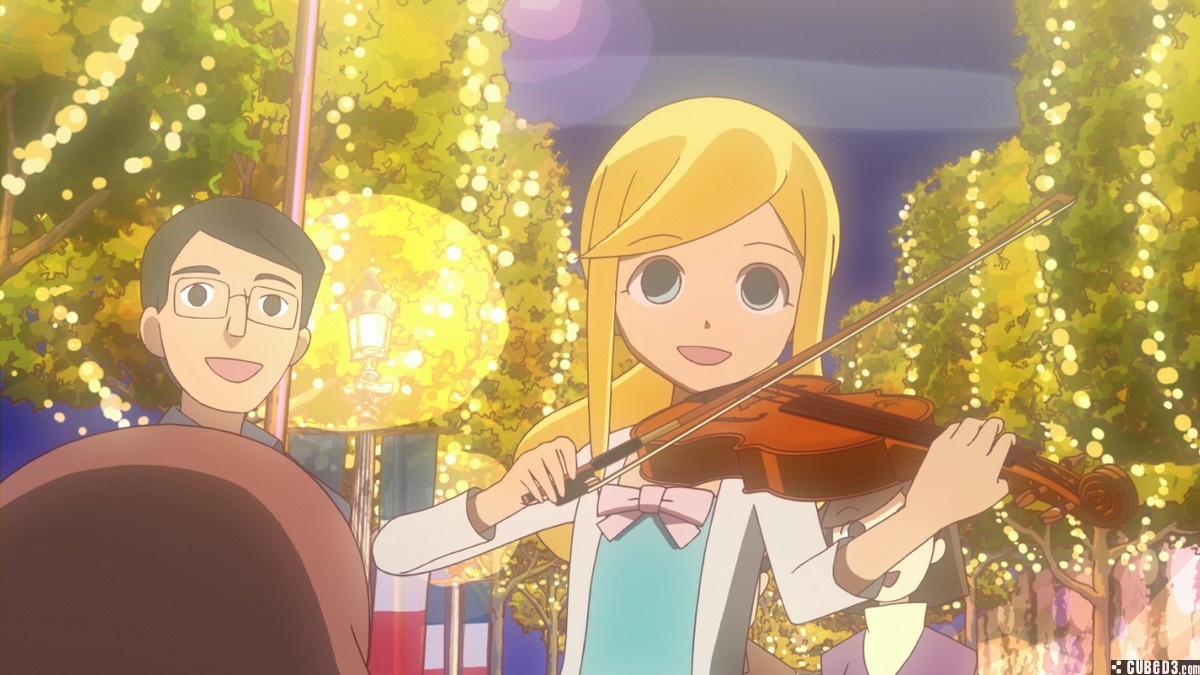
Even the best technical products will fall down without a strong selection of music to support them, however, and as with the Rhythm Paradise series, the choice of freshly conducted tunes, as opposed to the licensed affairs in the Taiko Drum Master games, works wonderfully well, getting toes tapping to the beat and really drawing the full concentration of players eagerly attempting to gain a row of ‘Perfect’s to score as high as possible and achieve an overall rating of ‘A.’ Hooking your 3DS up to a powerful sound system is indeed imperative! Combinations of face buttons, the A button alone, switching between A and B to jump and slide past guards, tapping left on the D-pad and then A on the right side of the 3DS to bat away foes, and using the stylus to tap or slide in different directions to match moves on the top screen or follow Guitar Hero-esque coloured bars -- all wonderful uses of the technology available. There are even modes where the gyroscope comes into play, such as an early mini-game where Fondue must be tilted at the right time to consume food and dodge hard projectiles heading his way. This is tantamount to a developer that knows the hardware it is working on inside out. Rhythm Thief and the Emperor’s Treasure exudes charm and flair from every pore, but the scoring system can seem unfair later into the adventure, with a perfect run being scuppered by only one or two mistakes before a challenge’s conclusion. However, this will merely encourage perfectionists to practice more!
As an aside to the main adventuring sections, with its smartly laid out storyline, delicious visuals, wondrous music, and highly addictive mini-games, there is also the opportunity to seek out all manner of noises from Raphael’s surroundings, such as someone coughing, a dog barking, water dripping, bees buzzing, a police siren going off, and so on. The purpose of this is to fulfil a side-quest where someone requires particular noises for their ingenious new contraption. Whilst a seemingly fruitless exercise at first, not only does it become highly addictive trying to find the right sounds, there are great rewards for those that persevere.
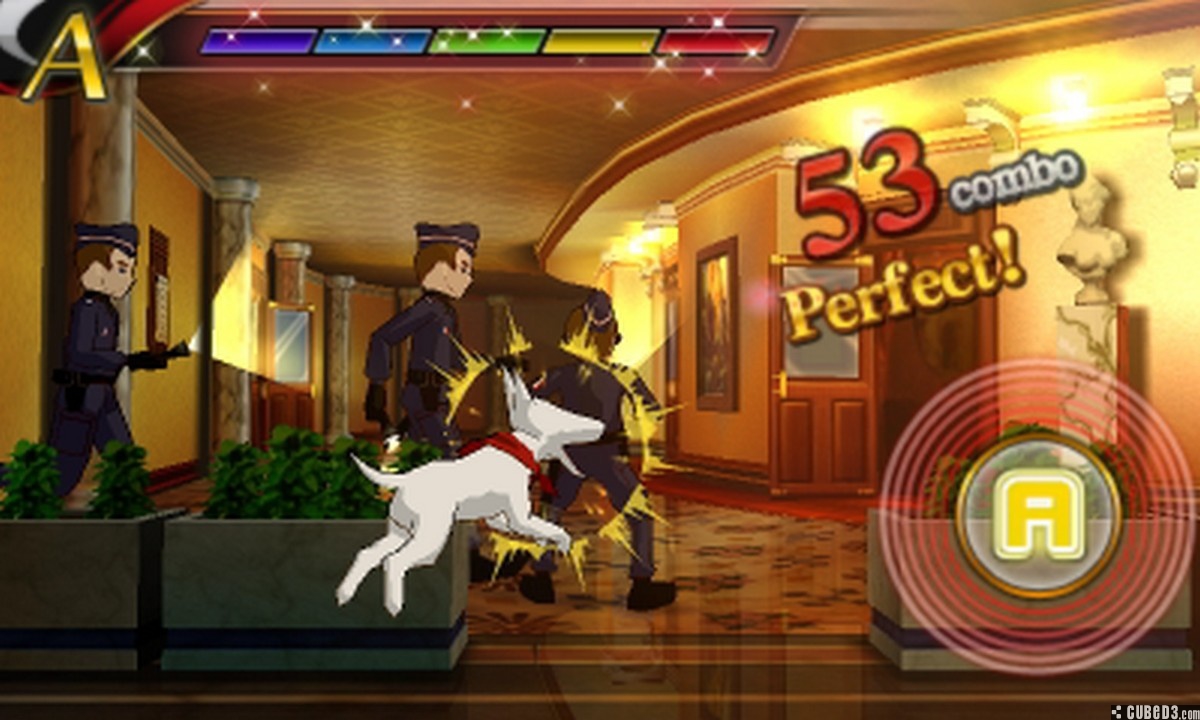
Additionally, in some areas there are hidden notes -- five in total -- that when quickly uncovered one after another form a Phantom Notes Music Scrap, of which there are eighteen littered around the game. In fact, Rhythm Thief really does encourage a lot of screen-tapping, outside of the mini-games, with plenty of hidden coins to find in every location, rather like in Professor Layton, except used as currency for buying items, not for hints during puzzles. When enough have been accrued, they can be used to purchase harder versions of the in-game challenges, as well as the animated movies already viewed. Another incentive for testing the durability of the 3DS touch-screen is that special CDs will sometimes emerge after some relentless scouring of each scene visited, giving access to all the main tunes from the amazing soundtrack in the Gallery Mode, where story and movie excerpts can also be viewed. The beauty of how the adventure works is that people have multiple conversation paths, dependent on whether they are talking to Raphael or Rhythm Thief R at the time, and their repertoire updates in accordance to the progression of the story, with new hidden items to find as you plough deeper into the mystery.
Finally, if working through the main story is not enough, then those with a penchant for higher difficulty levels can tackle Marathon mode, look forward to StreetPass shenanigans, on top of all the extras to collect along the way. Rhythm Thief and the Emperor’s Treasure strikes all the right notes, proving to be a delightful pastime for all the family.
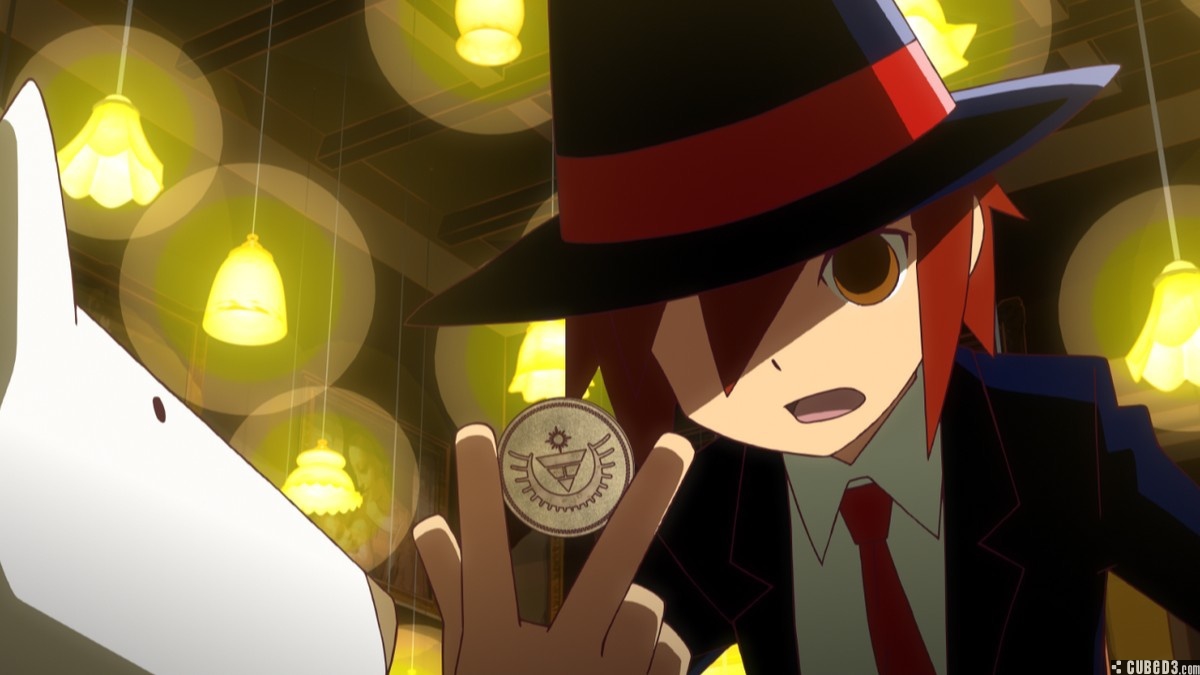
Cubed3 Rating
Exceptional - Gold Award
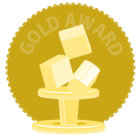
SEGA has crafted a wonderful first attempt at the rhythm genre on Nintendo 3DS with Rhythm Thief and the Emperor’s Treasure by mixing up the standard fare totally, slotting in all sorts of fantastic and addictive mini-games, a wealth of gorgeous presentation, and some absolutely amazing, toe-tapping tunes, plus a heap of impressive voice acting. The only aspect that some may feel holds it back is the quirky scoring system included, yet anyone loving a tough challenge will warm to it nicely.
Comments
Comments are currently disabled

 Sign In
Sign In Game Details
Game Details
 Out now
Out now  July 2012
July 2012  Out now
Out now  2012
2012  Subscribe to this topic
Subscribe to this topic Features
Features





 Top
Top

